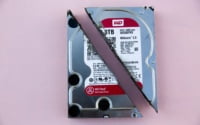Check One, Two, Three!

Avoiding Workplace Complacency and Customer Inconvenience through the use of Checklists.
Here at IOFlood we pride ourselves on using the right tools for the job, in everything we do. We love servers, which is why we would never use substandard hardware during provisioning. We also love our customers, which is why we take pride in providing quality service and high impact help at all times.
However, this doesn’t happen on it’s own. In this post, we’re going to discuss one of the key tools that we use to ensure consistent quality service — the humble checklist. We’ll go over why we use it, how we use it, and give examples of our actual checklists. Hopefully this can provide some inspiration for how you can use a similar strategy in your own business, and give you insight into how things are done behind the scenes here at IOFlood.
Whether it be in Support, Billing, Provisioning or any other aspect of our business operations, we strive to deliver consistent quality service to our customers. An important aspect of that is providing service that is free from mistakes, to help avoid unnecessary downtime or inconvenience to customers and their end users.
To make the most impact towards that goal, we looked to where the most mistakes were being made. It may seem counterintuitive at first, but we’ve actually found that most of the mistakes are made for work where staff are well trained and very familiar with the task at hand. This is especially the case where there are a lot of steps that need to happen in a precise order.
We believe there are a couple of reasons for this. Firstly, this routine work includes tasks that are done very frequently. Based on this alone, it shouldn’t be surprising that the largest quantity of mistakes happen here versus tasks that are rarely performed.
Just as important, this is work that can easily become routine. When you first learn how to do something, you pay close attention to make sure to do it right. After mastering a skill, it is easier to go on autopilot to do that task for the 100th time — things become routine. When working in this way, it is easy to overlook an important step of the process, by becoming complacent and assuming you will remember all the necessary steps. Counterintuitively, these simple mistakes are more likely to happen for staff who are more experienced and capable!
This type of complacency is something that needs to be worked against, because the mistakes it leads to causes inconvenience to customers and their end users.
One of the ways we have determined to tackle this head on here at IOFLOOD is through the use of Checklists.
Checklists have been widely implemented throughout society over a great many years, and have been designed to reduce errors and ensure consistency and completeness in carrying out a duty. From fields as diverse as neurosurgery, space flight, and food preparation, checklists have been preventing mistakes and saving lives for at least a hundred years.
From the first moment an employee joins our company, we start using checklists. We create a checklist for training, so we can make sure every aspect of their training is covered.
Even well beyond training, checklists are used to ensure that we have consistent delivery of quality service with every interaction.
A good litmus test we use for whether or not a task requires a checklist often comes down to the number of steps involved in a process or the complexity of a task, as well as tasks where mistakes are likely to cause serious problems for customers. Based on those two criteria, the bulk of our checklists revolve around provisioning new services, and billing / service cancellations. Both of these areas are complex, including a lot of steps that need to be completed accurately and completely in order for our customer to get the correct results the first time around. Both of these also involve work where any mistake can cause serious problems for a customer, and so mistakes must be avoided.
An example of one of our checklists is our “Orders (post install) — Linux Only Steps” checklist. This checklist is used after a Linux OS has been installed, to perform final software / OS setup steps required before handing the server off to a customer.

As you can see, the checklist is very straight forward, including all the relevant steps to ensure that installation of a Linux OS on a server is fully completed prior to delivery. by outlining the steps, this helps ensure everything is done.
This is just one of several checklists involved in the process of taking a customer order all the way to completion successfully.
You can see the same concept when you look at our “Finalize Post Install & Deliver The Server” checklist.

This is the checklist that we use when finalizing the delivery of the server to our customers and is perhaps one of the most important checklists that we use during the server delivery process. This is because it ensures everything is documented correctly, the customer can reach their server’s IPMI / KVM using a secure VPN, and all the relevant server details are available to our customer.
Following the checklist ensures that what is delivered to the customer is a server that has been fully provisioned and that the customer has all the information they need to be able to access their new server.
Additionally, following the checklist ensures that our records are completely updated with the correct information to avoid issues arising from poorly kept records. Issues such as IP addresses getting misconfigured or assigned to the wrong customer, configuring the wrong network ports, or providing customers with invalid login information, are all problems that are avoided through accurate documentation.
No decent pilot will take off their airplane without following their pre-flight checklist, regardless of how great their talent or experience. Similarly, here at IOFlood, regardless of how much experience our staff have, we rely on the use of checklists to ensure consistent and accurate results every time.
A checklist cannot fly a plane or deploy a server. Instead, they provide reminders of only the most critical and important steps. Under conditions of high complexity, checklists are not just helpful, they are required for success. As we learn better ways to ensure good customer outcomes, the proper steps for our work becomes more complex. It doesn’t take long before the volume and complexity of what we know has exceeded our individual ability to deliver its benefits correctly, safely, or reliably.
I hope this provides some insight into how we operate here at IOFlood, and how you might be able to use checklists to streamline operations in your own business. If there ever was any doubt of the value of checklists, consider this — even Han Solo and Chewbacca use a checklist!


